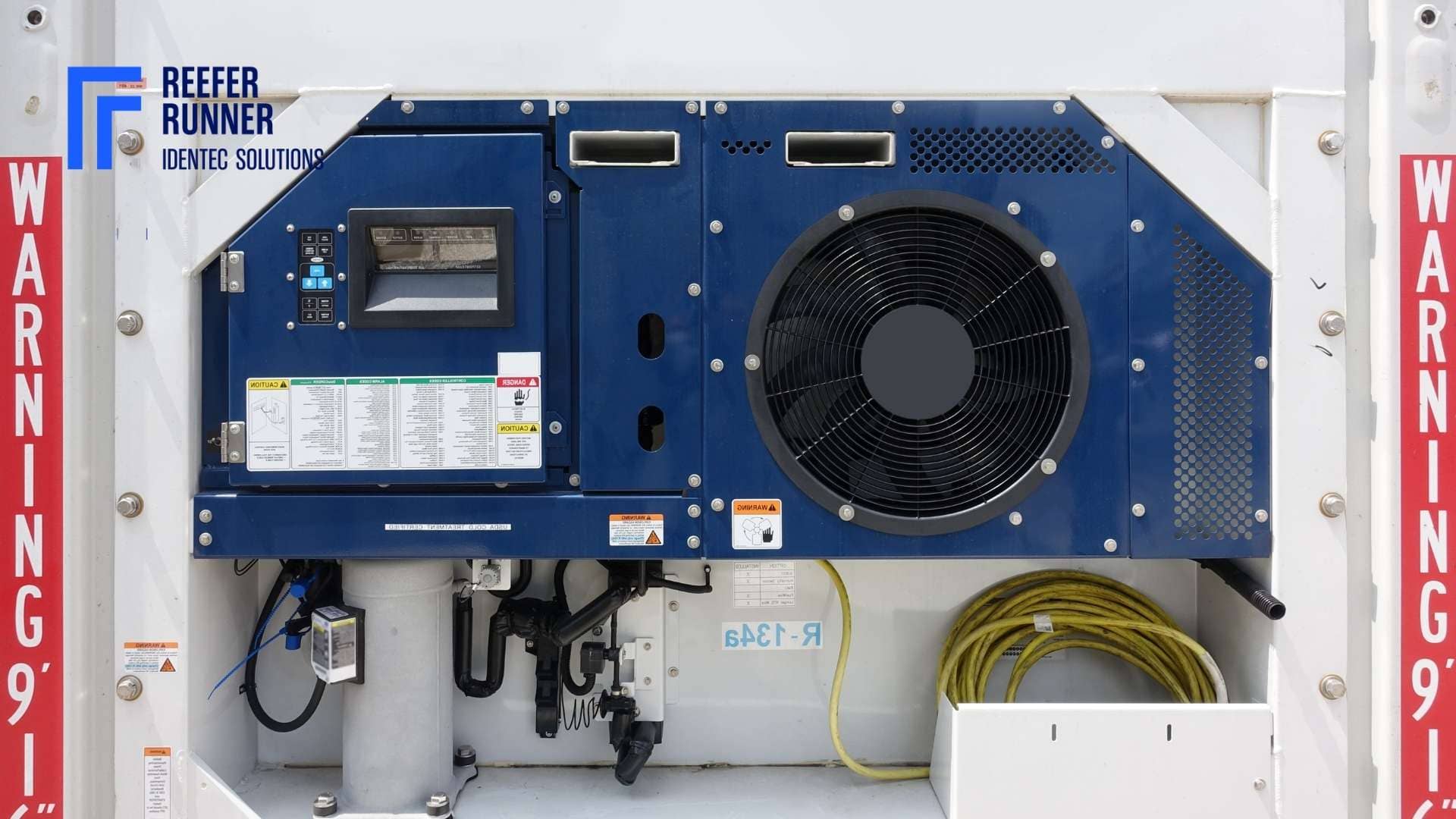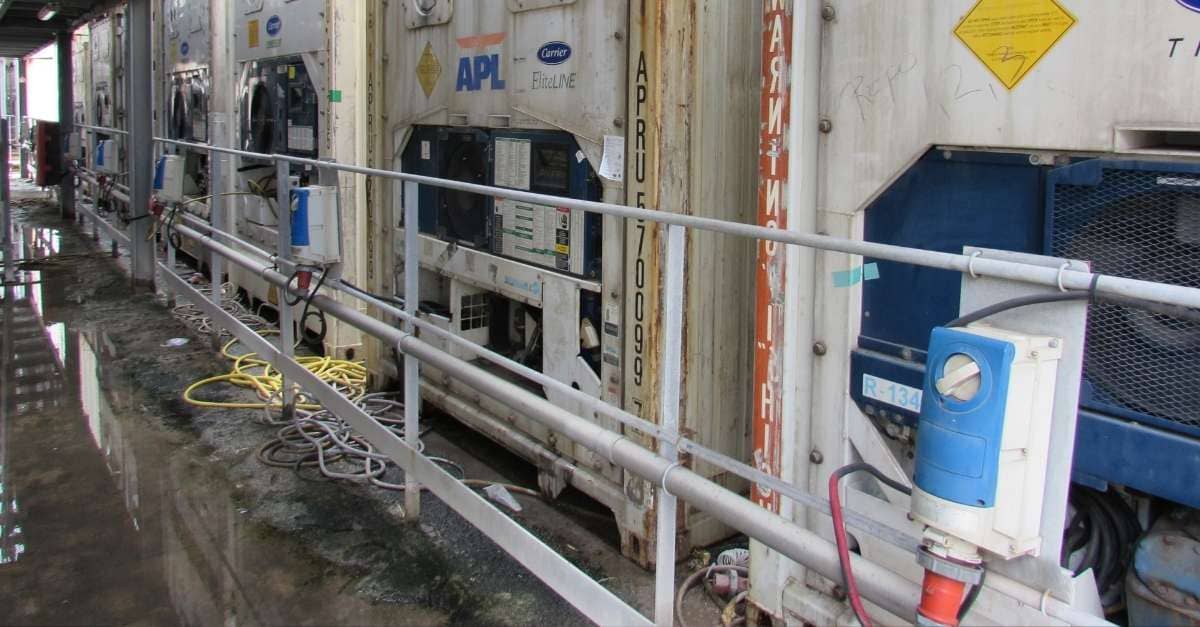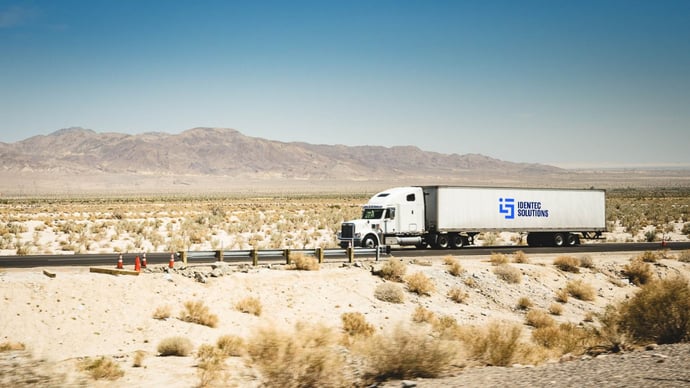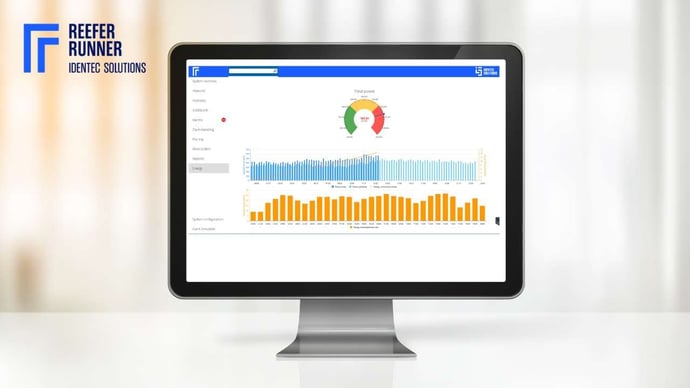101 Reefer plugs
| Written by Mark Buzinkay

No video selected
Select a video type in the sidebar.
"With a reefer management solution, you get real-time data on power consumption, enabling you to optimise energy use and make adjustments that directly reduce our operating costs."
Julian Galvis, Regional Head Americas
Reefer containers are specially designed to transport perishable items that require refrigeration. In order to keep the cargo cool, reefer containers are powered by either an electric motor or a diesel engine. They also have a built-in generator to provide the necessary power. By monitoring the reefers' power consumption, you can get insights into how your reefers are performing and make changes accordingly.
What are some of the benefits of using a reefer management solution?
- Get real-time data on your reefers' power consumption
- Optimise your reefer fleet's energy usage
- Reduce operating costs
If you're interested in reducing your reefer fleet's operating costs, then a reefer management solution is worth considering.
What are reefers used for?
A refrigerated container (reefer) is a shipping container used in intermodal freight transport. Reefer cargo is temperature-sensitive, perishable cargo such as fruits, vegetables, meat, and other items. The global reefer container market is projected to reach $19.8 billion by 2032, growing at a CAGR of 7.5% from 2023 to 2032. (1)
Standard reefer containers must be plugged into a power source in order to function. They are usually powered by a generator (reefer genset) attached to the container and provide electricity to the Cooling Unit. These generators can be either fuel-powered or electric-powered, or both. In addition, some reefer containers have a secondary generator set to act as a backup in case the primary fails.
If you're in charge of reefer containers, you must know about the gensets that power them. A genset, short for a generator set, is a power unit that provides electricity to reefer containers. Without a genset, a reefer container cannot cool itself, which is why they are necessary for standard reefer containers worldwide.
Genset controllers are used to monitor and control a genset system's function. A suitable genset controller will provide various monitoring functions of the reefer container, including voltage, current, frequency, and power. It should also be able to measure temperature and oil levels or pressure.
Therefore, it's vital that reefer container insulation can maintain internal cargo temperatures within 1-2 degrees Celsius of the cargo protocol temperature, even with power disconnection periods of 1 to 6 hours during transport. Learn here more about a reefer container temperature monitoring system.

What is a reefer plug?
Reefer container power supply is crucial to keep a certain temperature range. Learn in this section about requirements, specifications, voltage and sockets!
When a reefer is kept at a terminal, it must be plugged into a specialised electrical power outlet of 32 amperes and 380/440 volts. To provide power, terminals install what is known as reefer plugs (sockets) within their yards, which are combined into outlets supplying several reefers.
The reefer container power requirements consist of a three-phase electrical system with a supply voltage of 440/460 volt. Some units are available with three-phase 208/230-volt transformers. Units are available to run on 50 or 60 Hz.
Therefore, all refrigerated containers have a standardised plug attached to a cable that is several meters long to the genset. The plug is designed for 32amp 440V 60Hz with 4 pins: 3 poles + earth. The earth contact is in the 3-hour earth clocking position. Dockers will take the power cable out of a small box in the front of the reefer and connect the plug to the socket.
Container plugs and connectors need a heavy-duty design for harsh marine environments, a watertight seal, a universal grommet and high resistance to chemicals & impact. Therefore, plugs may have a different look and external features for extra safety, protection and quality, but they have the exact specifications.
Reefer Outlets in Ports
Container Port Terminals are dynamic, harsh and dangerous environments. Reefers need to be connected to power during their stay. Reefer Outlet Assemblies (ROA) are designed to focus on operator safety and are fabricated to withstand marine environments while providing equipment protection. Such ROAs are equipped with safety-interlocked power modules for safe and reliable connections to refrigerated containers. These modules should allow for easy maintenance and minimal downtime.
Safety-interlocked power modules must protect the operator with a "de-energised" circuit during the insertion and retraction of the male plug, preventing making or breaking under load. Terminal installations may also supply moulded-case circuit breakers with various trip ratings to allow for branch, overload and short-circuit protection.
Your standard reefer container will use approximately 18 amps on start-up and continue to use 8 amps while running. Therefore, it's essential to hose down or air-clean the condenser every month to ensure its fins are clean.
Learn more about the development of sustainable ports.
How are reefer containers powered during transport?
When shipping, reefer container operation is typically run on a vessel or shore power. A generator provides portable power to reefers during rail or truck shipping. Containers may have a built-in generator, or they may have one externally located.
Reefer outlets for trains should handle the transportation hazards associated with railroad cargo transport. Therefore, power modules require protection from corrosion and abuse because of the constant vibrations and extreme climatic conditions.
When on a vessel, reefer container sockets are made to withstand harsh marine environments. In addition to standard features of reefer outlets, shipboard reefer sockets require a water protection (IP67) screw cover to ensure a watertight seal. In addition, stainless steel frames, impact-resistant non-metallic sockets, nickel-plated brass contacts, and other stainless steel hardware is beneficial to mitigate corrosion damage.
Special care must be taken when handling high voltage current in order not to endanger the health of people in the vicinity. In addition, the correct position of the earth contact, the so-called o' clock position, must ensure that machines are not connected to a power supply with too high a voltage and thus overloaded.
FAQ
What are essential safety practices for reefer plugs and electrical connections?
Handling the high voltage connections required to power reefers carries serious risks; following safety practices can minimise these. Proper training and ongoing education of workers handling these connections is critical and essential.
Inspection and Preparation
- The power cord and plug must always be inspected for damage before connecting.
- The plug must also be inspected for exposed wires, cuts, cracks, burn marks or damaged pins.
- The power source must be turned off before connecting or disconnecting the refrigerated container.
Proper Connection Procedure
- The cord must be pulled out and carefully inspected before it can be connected.
- The power cord is plugged into the outlet and secured with the safety ring.
- The power must not be turned on until the plug is fully connected.
Unplugging Procedure
- The power source must be turned off before touching the cord or plug to unplug the plug from the outlet.
- The safety ring must be loosened to unplug the plug from the outlet.
- The power cord must be properly coiled and stored in the refrigerated unit case.
Safety Precautions
- Damaged power cords or plugs must never be connected.
- Appropriate personal protective equipment (PPE) must be used when handling high-voltage connections.
- The container must be adequately grounded to avoid electrical hazards.
- Power and electrical connections must be checked regularly and by certified electricians when necessary.
Monitoring and Maintenance
- Plugs, cables and connectors must be checked regularly for signs of wear or damage.
- Temperature, humidity, power supply and alarms must be monitored and documented.
- Regular cleaning maintains efficiency.
Takeaway
Reefer plugs are an integral part of reefer container technology. By understanding the specifications of reefer plugs and sockets and how they are used, you can ensure that your reefer containers are adequately powered and able to maintain the correct temperature for your products. However, it is not only important to secure the power supply for your reefer genset but also to monitor energy consumption. High energy consumption may indicate a faulty system, bad isolation, improper stowage or outdated genset technology (further reading: Reefer container).
Dive deeper into one of our core topics: Reefer monitoring
Glossary
A de-energised circuit is an electrical circuit that has been disconnected from all sources of electrical energy and is free from electrical charge. It's considered safe for work only after being locked out, tagged, tested for voltage absence, and grounded if necessary. De-energising is a crucial safety procedure in electrical work to prevent accidents and electrocution. However, circuits are considered energised until proven otherwise, as unexpected energy sources or induced voltages can pose risks. (2)
Reefer Outlet Assemblies (ROAs) are specialised electrical equipment designed for port terminals to safely power refrigerated containers (reefers). They feature safety-interlocked power modules that provide secure connections, preventing electrical hazards during plug insertion or removal. ROAs are built to withstand harsh marine environments, offering corrosion resistance and durability. These assemblies often include heavy-duty stainless steel enclosures, modular designs for easy maintenance, and customisable configurations to meet specific port requirements. (3)
Sources:
(1) https://www.alliedmarketresearch.com/reefer-container-market-A10780
(2) Geoffrey Stokes (2021): Handbook of Electrical Installation Practice. Wiley-Blackwell.
(3) Ioannis Manikas (2023): Refrigerated Transportation: Best Practices and Trends. Routledge.
Note: This article was updated on the 20th of March 2025

Author
Mark Buzinkay, Head of Marketing
Mark Buzinkay holds a PhD in Virtual Anthropology, a Master in Business Administration (Telecommunications Mgmt), a Master of Science in Information Management and a Master of Arts in History, Sociology and Philosophy. Mark spent most of his professional career developing and creating business ideas - from a marketing, organisational and process point of view. He is fascinated by the digital transformation of industries, especially manufacturing and logistics. Mark writes mainly about Industry 4.0, maritime logistics, process and change management, innovations onshore and offshore, and the digital transformation in general.
Related Articles
Related Product





